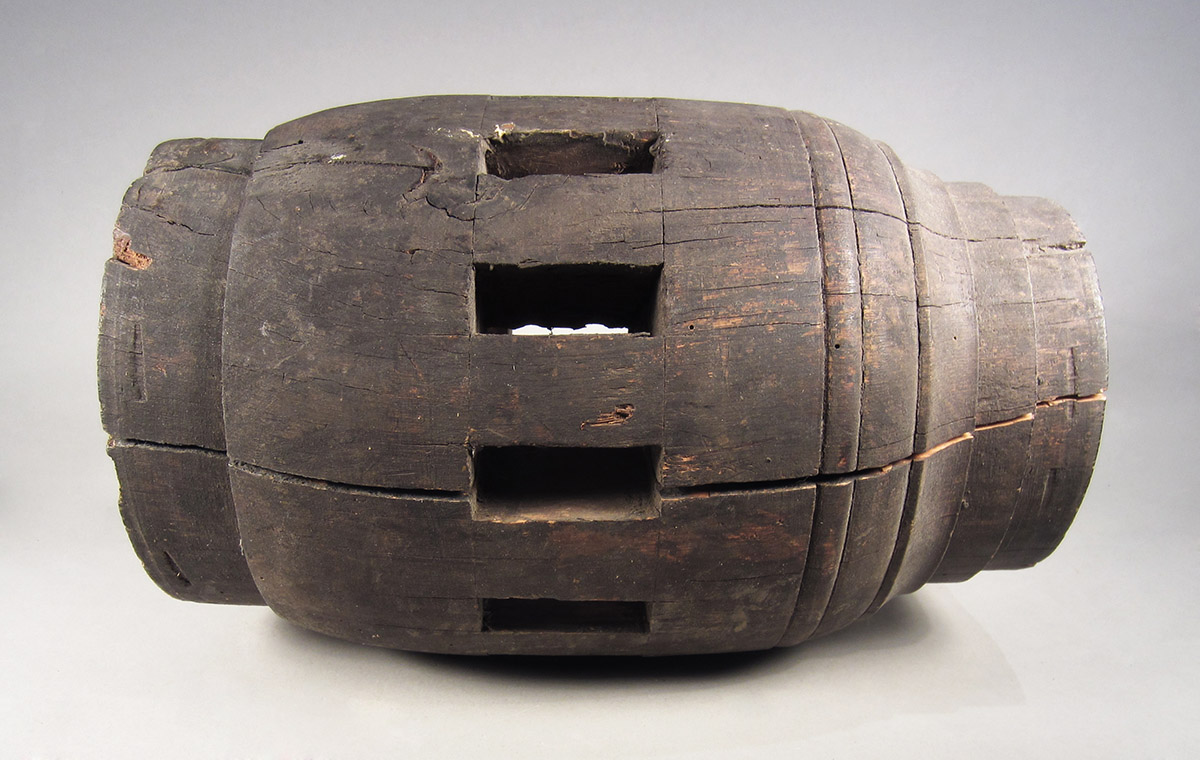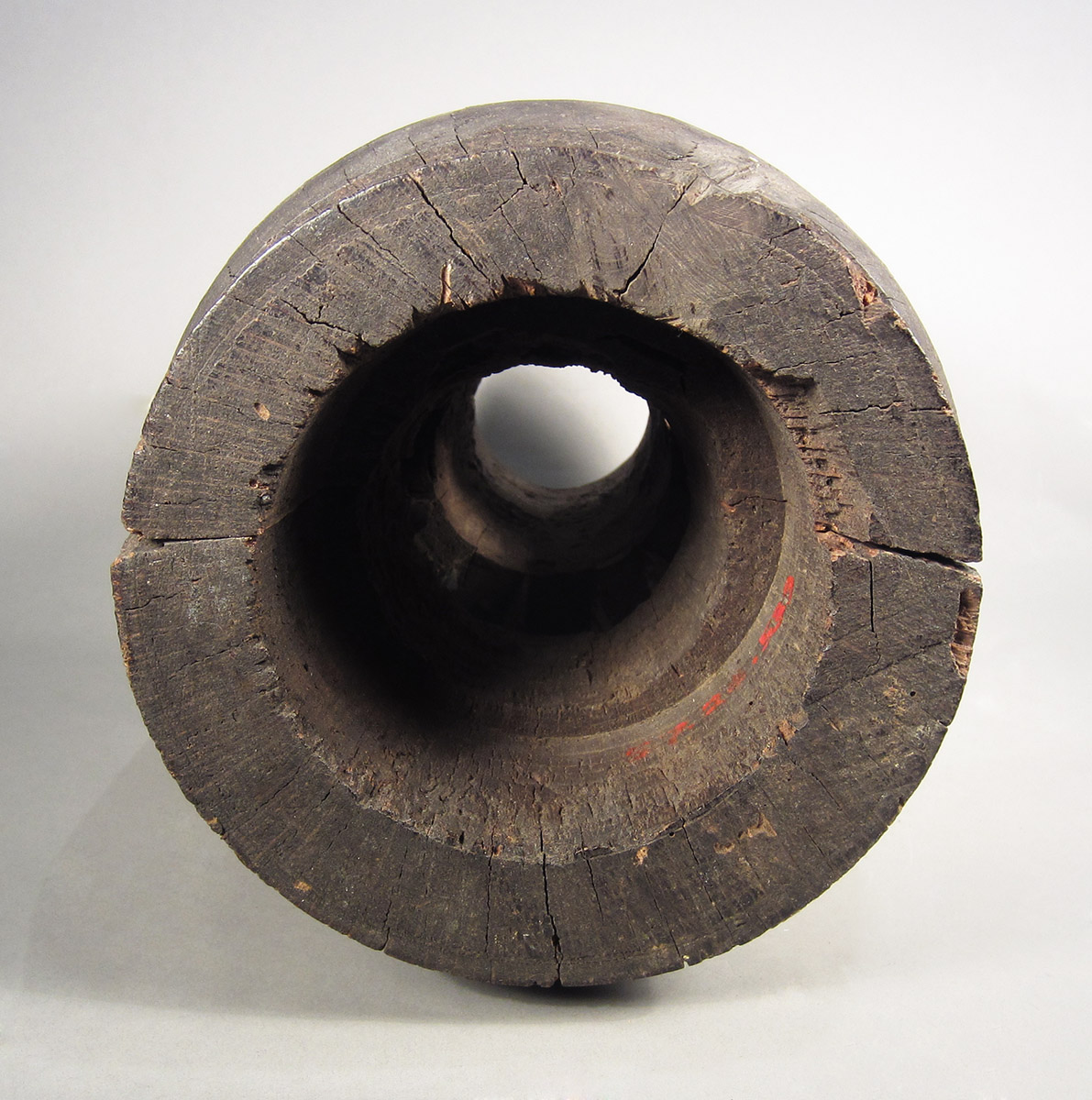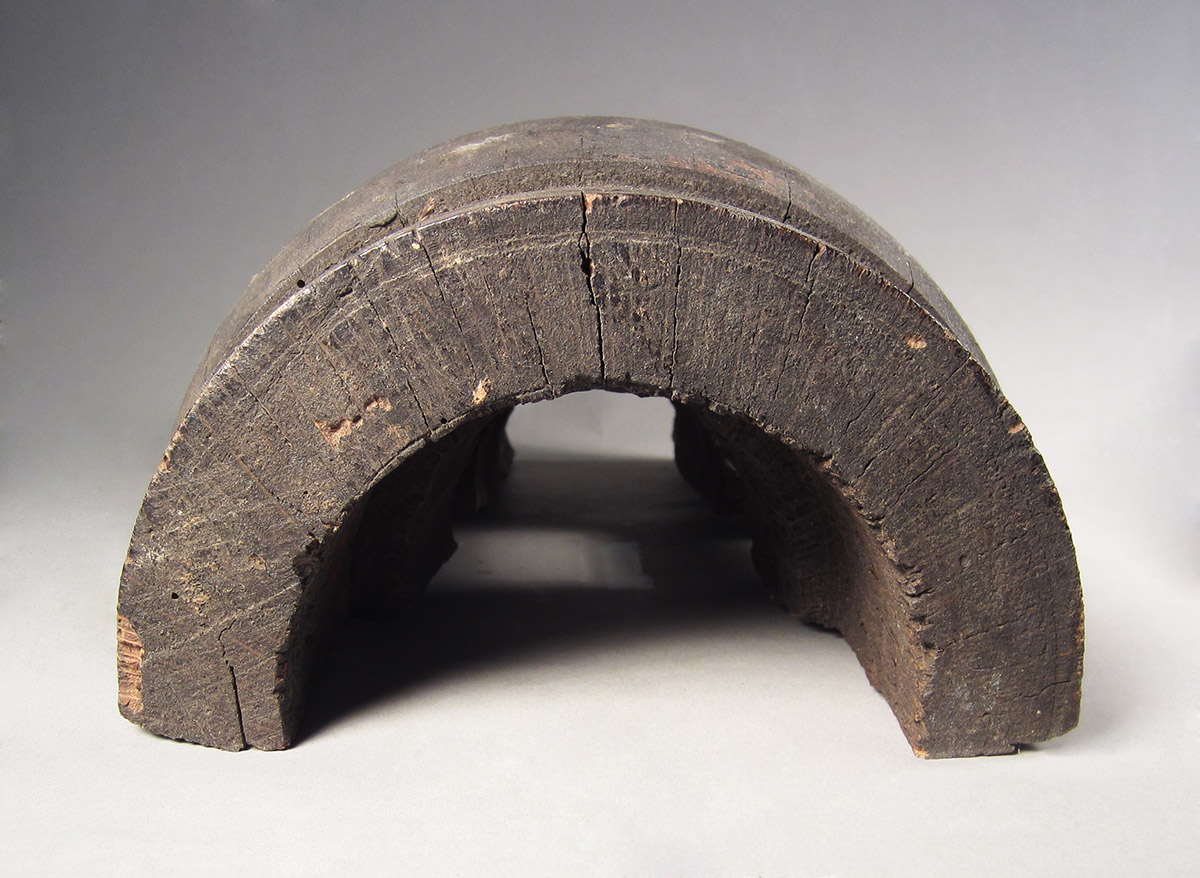Nathaniel Dominy IV and Nathaniel Dominy V applied their millwrighting skills to similar work as wheelwrights, cutting and joining curved elements, or felloes, to make wheel rims and turning and mortising wheel hubs. They turned out carriage, wagon, and cart wheels as well as spinning wheels and quill, or winding, wheels, recording a combined total of 293 spinning and winding wheels in their shop records between 1766 and 1818.
Above Image: Denis Diderot, Encyclopédie vol.10 (1769), plate 1.
Between 1799 and 1807, Nathaniel V made six carts. In 1798 he crafted a “riding chair” for East Hampton resident William Rysam at a cost of £10 ($25.00, or 26 days’ pay).
Wheel hub. Probably Nathaniel Dominy IV or Nathaniel Dominy V, East Hampton, New York; 1750–1800.Museum purchase with funds provided by Henry Belin du Pont 1957.26.533
Nathaniel V used this device while repairing the wheels of farm and passenger vehicles, including those of the stagecoach that regularly transited Long Island from Islip to Montauk.
Wagon jack. Probably Nathaniel Dominy V,East Hampton, New York; about 1830.Museum purchase with funds provided by Henry Belin du Pont 1957.26.286


The Dominy family used this wheelwright's cutter to mark points on leather.
Wheelwright's Cutter, probably England, Nathaniel Dominy V (purchaser, user) 1790-1850. Mahogany; Brass; Iron; Steel. 10" (L). Museum purchase with funds provided by Henry Belin du Pont, 1957.0026.033
A wheel felloe is a segment forming the rim of a wooden wheel. A number of felloe panels would be used to create one wheel. This one was probably made by Nathaniel Dominy V and also used by Nathaniel Dominy VII.
Pattern for felloe. Nathaniel Dominy V, East Hampton, New York; 1800–1850.Tulip-poplar.Museum purchase with funds provided by Henry Belin du Pont 1957.26.329





